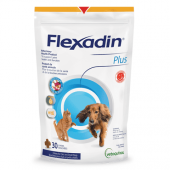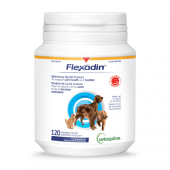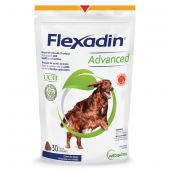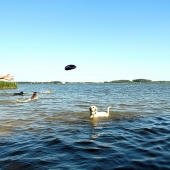If being around man’s best friend causes your eyes to itch and your nose to run, you’re not alone: up to 20% of the world’s population could be allergic to cats and dogs[1]. While getting a hypoallergenic pet may seem straightforward, there’s no guarantee it will work. Why? Because 100% hypoallergenic dogs don’t exist.
How dog allergy symptoms work
People with dog allergies react to specific proteins in canine hair, saliva, urine, and dander. Their immune systems mistakenly perceive these harmless substances as threats and responds with excessive force to eliminate them. Allergy symptoms such as increased mucus production, watery eyes, and sneezing are side effects of this internal struggle.
Hypoallergenic dog breeds vs. non-shedding dog breeds
Some dog breeds shed less or produce less saliva or dander – but they all do to some extent. Even if someone is only allergic to saliva, they’ll still be exposed to it whenever their short-haired dog grooms themselves.
It would be more accurate to describe hypoallergenic dogs as dogs that shed very little. A dog that sheds less hair doesn’t release as many allergens in your home. You can also expect less hair build-up on your couch or bed, which helps minimize the amount of vacuuming and cleaning necessary.
Adopting a dog when you have allergies
If you’re looking to adopt a puppy, consider the following advice when choosing your new companion:
- Dog breeds that shed minimally include the Bichon Frisé, Maltese, Poodle, Schnauzer, Yorkshire terrier, and Shih Tzu.
- Smaller dogs tend to release fewer allergens than larger ones. It makes sense that a 10-lb miniature poodle will leave behind less hair, saliva, and dandruff than an 80-lb Labrador.
- According to Dr. Lakiea Wright, an allergist at Brigham and Women’s Hospital in Boston, “Up to 30% of people who are allergic to dogs are actually allergic to one specific protein that’s made in the prostate of a dog”[2], [3], [4]. While this hypothesis has yet to be proven, it suggests that adopting a female dog or a neutered male could reduce the risk of triggering allergies.
Tips to reduce dog allergy symptoms at home
You can limit your exposure to dog allergens in your environment by implementing some (or all) of the ideas below:
- Don’t allow your dog in your bedroom.
- Wash your hands with soap and water whenever you touch your pet.
- Brush your pet daily – every hair on the brush is one less hair found elsewhere.
- Give your dog a weekly bath. Ask your veterinary clinic for an appropriate shampoo for regular use, and for other products that may help remove allergens from your dog's skin and coat."
- Wash your dog’s bedding weekly.
- Keep a HEPA filter air purifier running to trap airborne allergens.
- Wipe your dog with a damp cloth – especially their feet and belly – whenever they return from outside to remove pollen and other seasonal allergens that may become trapped in their coat.
[1] Chan SK and Leung DYM. Dog and Cat Allergies: Current State of Diagnostic Approaches and Challenges. Allergy Asthma Immunol Res 2018 March;10 (2) 97-105.






